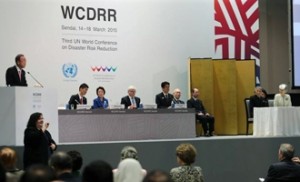This is a test.
Archive for March, 2015
This is a test
Saturday, March 21st, 2015This is a test
Friday, March 20th, 2015This is a test.
This is a test
Thursday, March 19th, 2015This is a test.
This is a test
Wednesday, March 18th, 2015This is a test.
This is a test
Tuesday, March 17th, 2015This is a test.
This is a test
Monday, March 16th, 2015This is a test
Your Pet’s Medical Needs in an Emergency
Sunday, March 15th, 2015In Prepare for the Worst, Plan for the Best: Disaster Preparedness and Recovery for Small Businesses (page 103), I wrote about the need to ensure that you have an adequate remaining supply of prescription medicine on hand in the event of an emergency. I also wrote that mail order pharmacies are a great convenience, but you need to plan for how you would receive your prescription refills should a disaster force you to leave your home. If your pet takes medications, you have to have a plan for obtaining his or her prescriptions as well. Now I have some new information that I want to share with you about filling your pet’s prescriptions.
This photograph shows Henry taking a nap at the foot of my desk as I work. I adopted Henry from a municipal shelter and immediately took him to the veterinarian for a check-up. He was found to be in good health, but about nine months after I adopted him, he had a seizure. I immediately brought him to the veterinarian for an evaluation and we decided not to medicate him at that time. The vet explained to me that the medication that is typically prescribed reduces the frequency of seizures, but does not eliminate them entirely. The medication does, however, cause side effects and as Henry had only a single seizure episode, which was mild, or “partial” as the vet described it, we decided to keep a watchful eye on him. I called Henry’s seizure episode “mild” because he did not lose continence or consciousness and he was back to normal in short order. The correct term for such a seizure is “partial”. Thereafter, Henry had additional seizures, all mild, and occurring about once every three months. I kept careful notes of these episodes to share with the vet. The vet advised that we would reconsider the decision to medicate Henry should (1) the seizures become more severe or (2) the seizures occur more frequently or (3) Henry were to suffer a “cluster”, or back-to-back seizure, in which he comes out of one seizure and immediately goes into another. In the event of a cluster seizure, I would have to immediately bring Henry to the local 24-hour veterinary hospital where they would stop the seizure by administering Valium, as cluster seizures can be fatal.
Henry did well without medications, having one mild seizure approximately every three months. After a year, however, he had his first cluster seizure. The vet referred us to a veterinary neurologist as there are new, safer drugs on the market. As my vet’s practice did not have sufficient experience with these new drugs, it was decided to see a specialist. Thankfully, Henry had a normal neurological examination and the decision was made to start him on Zonisamide. He has been on the drug for about nine months now and has not had a single seizure and has not experienced any side effects, for which I am very grateful. I did some comparison shopping in getting Henry’s prescription filled. All of the major chain pharmacies fill pet prescriptions with the order of a veterinarian. The average price was a 30-day supply of Zonisamide was just under $200. Wal-Mart and Sam’s Club can each fill the same prescription for $22!
Then I asked pharmacist at my local Wal-Mart if they offer mail order delivery for pet medications just as they do for humans, and the answer was yes. Wal-Mart would issue a 45-day supply of Henry’s prescription for under $20 and free shipping! It is a great convenience to have Henry’s prescription delivered by mail at no extra charge. And because it is a pet medication, for which I am paying cash out of pocket, it is not so difficult to order refills in advance, such that if we had to leave the home under an evacuation order, I would have a sufficient supply of Henry’s medications on hand to ensure that he remains well. I want to share that information with all pet owners, as I was shocked to learn of the range of prices for pet medications and the flexibility for mail order delivery.
Third World Conference on Disaster Risk Reduction
Saturday, March 14th, 2015The Third UN World Conference on Disaster Risk Reduction opens today in Sendai, Japan at which UN Member States will confirm a successor agreement to the Hyogo Framework of Action (HFA) that will be known, appropriately, as the Sendai Framework. The Hyogo Framework for Action (Building the Resilience of Nations and Communities to Disasters) was an ambitious ten-year program to significantly reduce disaster risks worldwide. The Hyogo Framework was adopted by UN Member States at the Second World Conference on Disaster Reduction held in January 2005 in Hyogo, Japan. The Second World Conference was motivated by a sense of urgency to address disaster risks, as it was convened following the 2004 Indian Ocean Tsunami.
The Hyogo Framework was developed around five priorities:
- Ensure that disaster risk reduction is a national and local priority with a strong institutional basis for implementation.
- Identify, assess and monitor disaster risks and enhance early warning.
- Use knowledge, innovation and education to build a culture of safety and resilience at all levels.
- Reduce the underlying risk factors.
- Strengthen disaster preparedness for effective response at all levels (regional, national, local).
Each of the priorities is assessed by individual indicators of progress. Every two years, countries report through a tool known as the HFA Monitor and the United Nations Office for Disaster Risk Reduction (UNISDR), the UN body that serves as secretariat for this work, prepares an in-depth analysis of the findings. This periodic reporting allows countries and other stakeholders to reflect on progress made and assess the remaining challenges. It has also proved helpful for the sharing of best practices in disaster risk reduction. In the two years leading up to this week’s conference in Sendai, UNISDR, at the request of the UN General Assembly, coordinated all of the preparation work and consulted with all of the relevant stakeholders to begin the basis for negotiations.
The outcome of this week’s conference, the Sendai Framework, is expected to serve as the “next generation” guidance for global disaster risk reduction, building on the progress made under the HFA. Specifically, the Sendai Framework is expected to address issues such as emerging risks (such as food security, cyber security and environmental hazards, for example) and the challenges of adapting to climate change. This is an important week for Prisere LLC as we have worked for UNISDR on the reporting and analytical work on the road to Sendai. The conference is also important to small businesses, as the Sendai Framework is expected to call for increased engagement of the private sector in disaster risk reduction.
This is a test
Friday, March 13th, 2015This is a test
This is a test
Thursday, March 12th, 2015This is a test.

